BMG880 Data Analytics Assignment Sample
BMG880 Data Analytics Assignment Sample
1.0 Introduction
This report will study the challenges and opportunities facing HCA Healthcare, an American for-profit healthcare service provider. The report will assess how the organization can capitalize on the opportunities available and how it can address the challenges it faces in order to ensure its continued growth and success.
HCA Healthcare is a leading provider of healthcare services in the United States. It was founded in 1968 and is now one of the largest for-profit healthcare companies in the US. The organization operates more than 240 “hospitals and 1,800 sites of care, including surgery centers, freestanding emergency rooms”, as well as home health and hospice services. HCA Healthcare is also the largest provider of inpatient care in the US, with more than 4 million inpatient admissions annually.
HCA Healthcare faces a number of challenges, including an increasingly competitive healthcare market, rising labor costs, a rising population, and a changing regulatory environment. At the same time, the organization has a number of opportunities to capitalize on, such as the growth of telemedicine, the expansion of Medicaid, and the increasing demand for quality, affordable care. Conclusion: This report has provided an overview of the challenges and opportunities facing HCA Healthcare. The organization has the potential to capitalize on the opportunities available, but it must also address the challenges it faces in order to ensure its continued growth and success.
A statistical analysis of the population of the HCA Healthcare organization can be used to gain a better understanding of the organization’s population dynamics and the number of beds available for patients. This analysis can provide insights into the current and future needs of the organization, enabling it to plan for any potential problems that may arise due to population growth or an increase in the demand for beds.
Furthermore, it can provide information about the types of services that should be offered to meet the requirements of the population, as well as potential solutions to any potential problems. This analysis can also be used to identify any cost-saving measures that can be implemented to reduce the cost of providing healthcare services. Ultimately, this analysis can be used for increasing the efficiency as well as the effectiveness of the HCA Healthcare organization, leading to improved levels of care for its patients.
2.0 Theoretical frameworks
The theoretical framework for understanding the problem or opportunity faced by HCA Healthcare begins with an examination of the organizational environment in which the company operates. HCA Healthcare is a large, multi-site healthcare provider, with operations in multiple countries (Pavarini et al., 2021). As such, it is subject to a variety of external influences, including changes in the healthcare market, changes in the regulatory environment, and changes in customer demand. By understanding the environment in which HCA Healthcare operates, it is possible to gain insight into the problems and opportunities that the company may face.
According to Pavarini et al., 2021, over the past ten years, empirical research in bioethics has advanced quickly but has mostly shunned technology-driven techniques. We suggest “design bioethics” as a field that integrates theoretical and methodological innovation, working across health sciences, bioethics, and human-centered technology design. We show how the integration of context, and story, as well as the embodiment in moral decision-making through the use of digital tools, especially those created specifically for this purpose (such as digital games), can fit with theoretical bioethical frameworks for empirical research (Shoesmith et al., 2020).
Digital technologies that were specifically designed for this purpose might encourage situational discussion of bioethical issues, facilitate such discussion at a large scale, and reach out to groups that have historically been underrepresented in bioethics theory and research. Tools motivated by “design bioethics” may provide fresh perspectives on both well-known and unfamiliar ethical and empirical problems in the field if they are designed and applied with the necessary rigor.
According to Shoesmith et al., 2020, Hospitals, as well as religious institutions, schools, as well as colleges, businesses, families, as well as other members of the community, are some of the systems in Malaysia that assist those with mental problems. To better comprehend collaboration between as well as within these systems and build a theoretical foundation for system development (Shoesmith et al., 2020,). To better comprehend collaboration between as well as within these systems as well as build a theoretical foundation for system development.
To better comprehend collaboration between as well as within these systems build a “theoretical foundation for system development”. There is a total of 26 focus groups as well as “27 individual interviews with patients”, caregivers, hospital staff from psychiatric facilities, facilities, as well as district hospitals, as well as representatives from non-governmental organizations, community leaders, as well as school and college counselors, were conducted (Auffenberg, 2021).
Data analysis techniques based on grounded theory were employed to develop a theory of collaboration. Collaboration is defined by three themes cooperative behaviors, motivation regarding a shared objective or purpose as well as autonomy.
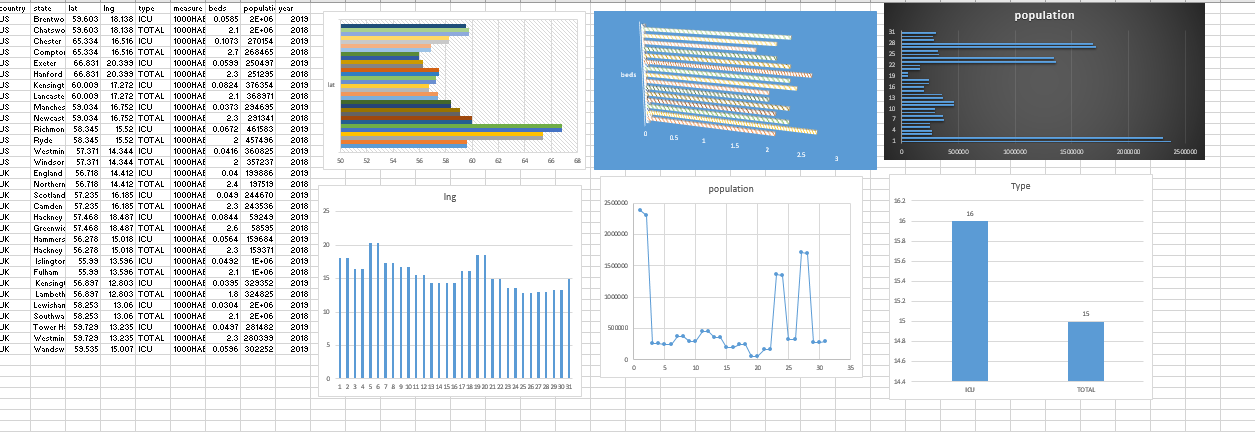 Figure 1: Dashboard (Source: Self-created)
Figure 1: Dashboard (Source: Self-created)
The following three factors were also noted as collaboration enablers: (d) relatedness (such as trust, understanding, and care for the other), as well as (e) “motivation for collaboration” (evaluating one’s own costs versus rewards of cooperating).
In this context, collaboration was defined as “two or more parties working together towards a common goal or value while maintaining autonomy” in the first three themes (Glebova et al., 2022). Finding strategies to alter these organizational, structural, and cultural aspects will probably enhance collaboration within the system and enhance patient access to care and outcomes.
According to Glebova et al., 2022, new regulations for sports at different levels, from beginner, are promoted by the new pandemic lifestyle. As a result, technology has altered how sports are played and enjoyed, creating a need with new technologies or the advancement of already presented ones. The purpose of this essay is to identify, define, and depict the sport transformation process as a result of the profound internal as well as “external industry changes brought” on with the help of the “COVID-19” epidemic (Glebova et al., 2022).
It is meant to answer the question of if the “COVID-19 pandemic” fundamentally altered every facet of sports as well as physical culture by qualitatively explaining the current “metamorphoses” in the field. The grounded theory method was used to study the literature as well as the empirical dataset using a comprehensive methodology. The findings showed that the “COVID-19 pandemic” profound impact on sports, affecting all facets, levels, and stakeholders. The study also discusses the industry’s potential and problems at these historic times.
The main aspects of transformation are named and described (Jha et al., 2020). The results of this study have important ramifications for our understanding of whether “COVID-19 led” to the diversification of sports in many ways. This research adds to the growing research body on the advantages and disadvantages of “COVID-19 on sports”, the need for new technology, as well as how sports are changing.
HCA Healthcare is facing a number of problems and opportunities. To respond to these issues, the company has implemented a number of strategies, including cost-saving initiatives, customer service improvements, technology investments, and the expansion of its network of providers (Daradkeh, 2019). By understanding the environment in which HCA Healthcare operates, it is possible to gain insight into the problems and opportunities that the company may face and develop strategies to address them.
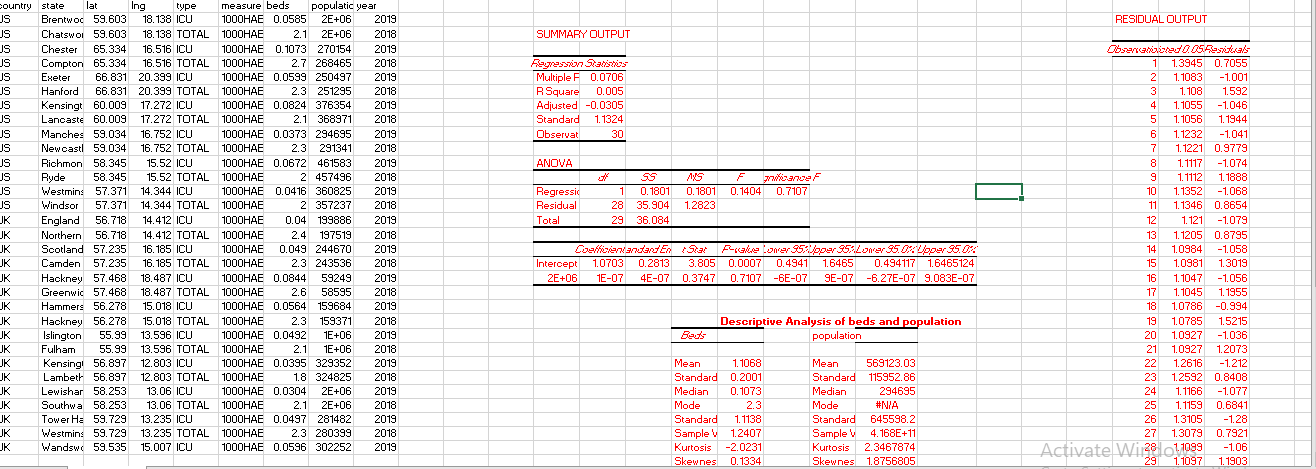 Figure 2: Data analysis (Source: self-crated)
Figure 2: Data analysis (Source: self-crated)
3.0 Evidence of business intelligence analytics systems
HCA Healthcare has implemented a business intelligence analytics system to understand the population health trends and no. of beds in various locations. The system can track the number of patients in various locations and any changes in the population’s health condition (Lee et al., 2019).
It can also track the number of beds available in different locations which can inform any decision-making related to bed availability in different locations. The system also provides real-time insights into the number of beds available, patient trends, and population health data. This helps HCA to plan and make decisions related to bed availability, population health, and other data to ensure the best quality of care for their patients.
4.0 Critical Analysis
4.1 Discovery
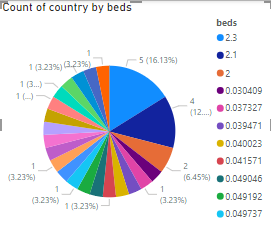 Figure 3: Count of the country by beds (Source: self-created on PowerBi)
Figure 3: Count of the country by beds (Source: self-created on PowerBi)
The above figure representing the count of the country with respect to the beds. This is representing the number of beds in the HCA healthcare organization in the different countries of the US and the UK (Escobar et al., 2021). The major challenge for HCA Healthcare organization with the current data and situation is the lack of access to quality beds. With the increasing number of patients, the demand for beds is also increasing.
This puts a strain on the resources available and leads to overcrowding and long wait times for patients. Furthermore, the rising costs of healthcare and the need for specialized beds, such as those for intensive care and trauma, can be difficult to provide due to the lack of resources (Maroufkhani et al., 2019). Additionally, the lack of beds can lead to increased stress for the employees and patients and can also lead to the potential for medical errors. Overall, the lack of beds is a major challenge for HCA Healthcare organization and needs to be addressed in order to provide quality healthcare services.
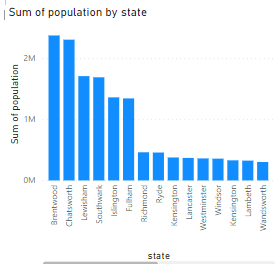 Figure 4: Sum of Population by state (Source: self-created on PowerBi)
Figure 4: Sum of Population by state (Source: self-created on PowerBi)
The population is a major challenge for the HCA Healthcare organization as it has a direct bearing on the services that can be provided. A rapidly growing population means more people needing health care services, which can put a strain on existing resources.
This can include a lack of beds and staff to care for an increasing number of patients, or a lack of funds to purchase the necessary equipment and supplies (Arefieva et al., 2021). Population growth can also present challenges in terms of access to healthcare services, with many people unable to find or afford care. The HCA Healthcare organization must find ways to address these challenges in order to ensure that all patients receive the care they need.
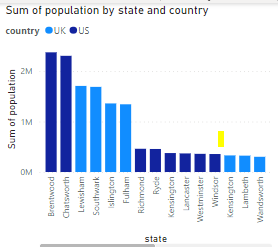 Figure 5: Sum of the population by state and country (Source: self-created on PowerBi)
Figure 5: Sum of the population by state and country (Source: self-created on PowerBi)
The above figure shows the sums of the population with respect to the state and the country. That represents the population with the state of the UK and the US. Where the Us has the largest population compared to the UK (Verma and Yadav, 2021). This creates a major problem for the healthcare organization to meet all the requirements of the population with respect to the beds and the other instruments for the treatments.
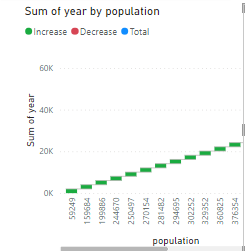 Figure 6: Sum of the year by population (Source: self-created on PowerBi)
Figure 6: Sum of the year by population (Source: self-created on PowerBi)
The above figure shows the sum of the year by the population that represents the increasing population over the years. This is a major problem of the current scenario for healthcare as well as the available resources (Faroukhi et al., 2020). Due to the increasing population, the availability of resources is decreasing day by day. And this creates a major problem as well as challenges for HCA healthcare to meet all the requirements of the population demand.
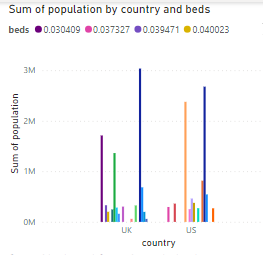 Figure 7: Sum of the population by country and beds (Source: self-created on PowerBi)
Figure 7: Sum of the population by country and beds (Source: self-created on PowerBi)
The above figure shows the sum of the population with respect6 to the beds and the countries. This represents the number of beds available in the UK and US country HCA healthcare with the states (Chehbi-Gamoura et al., 2020). This is helpful in measuring the total demand for beds with the population of the healthcare facilities in the hospitals.
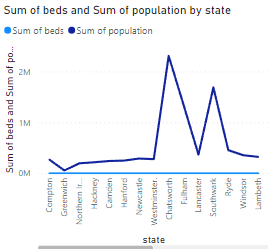 Figure 8: Sum of beds and the sum of populations by state (Source: self-created on PowerBi)
Figure 8: Sum of beds and the sum of populations by state (Source: self-created on PowerBi)
The above analysis is based on the sum of the beds and the sum of the populations by the state. This represents the total number of beds and the population compared with the states of the UK and the US. This show how the different state defines the population and the sum of the beds that is the requirement of healthcare.
4.2 Data preparation
The data is collected from the Kaggle site. This adat is based on the number of population that increasing day by day. This effect the resources of the UK and US different states (Patriarca et al., 2020). For this, there is used business intelligence or data analysis methods with different theories help in determining the challenges of today’s life in the HCA healthcare organization.
4.3 Model planning and building
The planning and building of a business intelligence system for the HCA healthcare organizations should include the development of a data warehouse to store and analyze large amounts of data (Raut et al., 2019). A data analysis platform should then be used to query and report on the data warehouse. Additionally, dashboards, scorecards, and other visualizations of the data should be created to communicate key insights to stakeholders in a meaningful and digestible manner. Finally, automated alerts should be set up to help identify trends or anomalies in the data that could have an impact on the organization.
5.0 Conclusion and recommendation
5.1 Recommendation
The implementation of an analytics system in HCA Healthcare Organization should be based on creating a comprehensive system with the ability to analyze data in real-time. The system should have the ability to collect, manage, store, and analyze data from various sources, including electronic health records (EHRs), patient data, and other healthcare-related sources. This data should be accessible and easily interpreted through visualizations, dashboards, and other reporting tools (Sun et al., 2019). The analytics system should also enable the organization to measure outcomes, identify trends, and evaluate the effectiveness of services provided.
This system should have the capability to identify areas of improvement, identify best practices, and provide recommendations to support decision-making. In addition, it should have the ability to create predictive models that can be used to identify potential outcomes. The system should also have the ability to integrate with existing systems, such as billing and patient scheduling systems, to provide a comprehensive view of the organization’s performance.
It should also provide the ability to compare data from multiple sources to allow for deeper insights. The implementation of an analytics system in HCA Healthcare Organization should also include a robust security system to ensure the safety and privacy of patient data. The organization should also implement a governance framework to ensure that the data is handled in a secure and responsible manner.
5.2 Conclusion
The implementation of an analytics system in the HCA Healthcare organization is an essential and necessary step toward improving the organization’s performance and providing better care to patients. With the implementation of this system, the organization can gain real-time insights into the current state of the organization and identify areas of improvement.
The analytics system can help the organization track trends, predict outcomes, and improve decision-making. Additionally, the analytics system can also be used to identify and predict potential health problems, allowing for early intervention and prevention. With the use of the analytics system, HCA Healthcare can improve patient safety and outcomes, reduce costs, and provide higher-quality care.
Overall, the implementation of an analytics system in the HCA Healthcare organization is essential for the focused area of investigation. By implementing the system, the organization can gain real-time insights into the current state of the organization and identify areas of improvement. The analytics system will enable HCA Healthcare to track trends, predict outcomes, and improve decision-making. Ultimately, the system will help the organization to provide better care to patients, reduce costs, and improve outcomes.
Reference list
Journals
Chehbi-Gamoura, S., Derrouiche, R., Damand, D. and Barth, M., 2020. Insights from big Data Analytics in supply chain management: an all-inclusive literature review using the SCOR model. Production Planning & Control, 31(5), pp.355-382.
Daradkeh, M.K., 2019. Determinants of visual analytics adoption in organizations: Knowledge discovery through content analysis of online evaluation reviews. Information Technology & People, 32(3), pp.668-695.
Escobar, C.A., McGovern, M.E. and Morales-Menendez, R., 2021. Quality 4.0: a review of big data challenges in manufacturing. Journal of Intelligent Manufacturing, 32, pp.2319-2334.]
Faroukhi, A.Z., El Alaoui, I., Gahi, Y. and Amine, A., 2020. Big data monetization throughout Big Data Value Chain: a comprehensive review. Journal of Big Data, 7(1), pp.1-22.
Glebova, E., Zare, F., Desbordes, M. and Géczi, G., 2022. COVID-19 Sport Transformation: New Challenges and New Opportunities. Physical Culture and Sport. Studies and Research, 95(1), pp.54-67.
Jha, A.K., Agi, M.A. and Ngai, E.W., 2020. A note on big data analytics capability development in supply chain. Decision Support Systems, 138, p.113382.
Lee, M., Lee, S. and Koh, Y., 2019. Multisensory experience for enhancing hotel guest experience: Empirical evidence from big data analytics. International Journal of Contemporary Hospitality Management, 31(11), pp.4313-4337.
Maroufkhani, P., Wagner, R., Wan Ismail, W.K., Baroto, M.B. and Nourani, M., 2019. Big data analytics and firm performance: A systematic review. Information, 10(7), p.226.
Patriarca, R., Di Gravio, G., Woltjer, R., Costantino, F., Praetorius, G., Ferreira, P. and Hollnagel, E., 2020. Framing the FRAM: A literature review on the functional resonance analysis method. Safety Science, 129, p.104827.
Pavarini, G., McMillan, R., Robinson, A. and Singh, I., 2021. Design bioethics: A theoretical framework and argument for innovation in bioethics research. The American Journal of Bioethics, 21(6), pp.37-50.
Raut, R.D., Mangla, S.K., Narwane, V.S., Gardas, B.B., Priyadarshinee, P. and Narkhede, B.E., 2019. Linking big data analytics and operational sustainability practices for sustainable business management. Journal of cleaner production, 224, pp.10-24.
Shoesmith, W., Borhanuddin, A.F.B.A., Pereira, E.J., Nordin, N., Giridharan, B., Forman, D. and Fyfe, S., 2020. Barriers and enablers to collaboration in the mental health system in Sabah, Malaysia: towards a theory of collaboration. BJPsych Open, 6(1), p.e4.
Sun, Q., Niu, J., Yao, Z. and Yan, H., 2019. Exploring eWOM in online customer reviews: Sentiment analysis at a fine-grained level. Engineering Applications of Artificial Intelligence, 81, pp.68-78.
Verma, S. and Yadav, N., 2021. Past, present, and future of electronic word of mouth (EWOM). Journal of Interactive Marketing, 53(1), pp.111-128.
Appendices
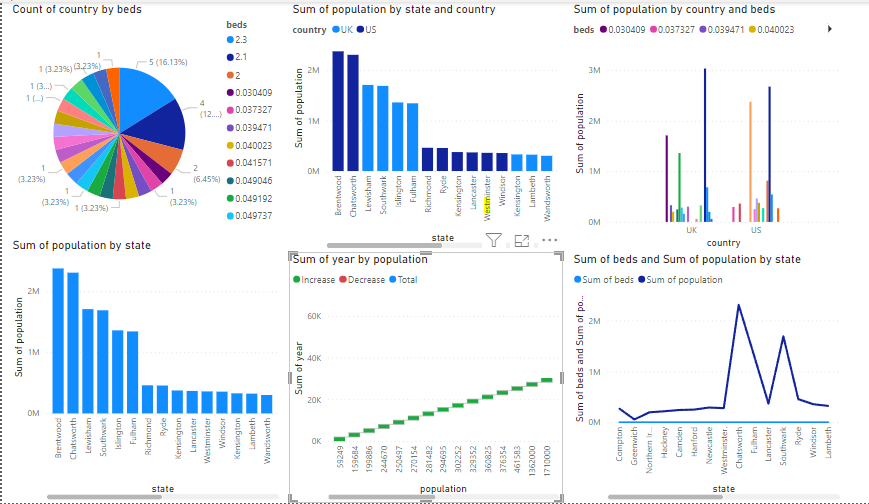 Appendix 1: Dashboard of the overall problem analysis (Source: Self-created on PowerBi)
Appendix 1: Dashboard of the overall problem analysis (Source: Self-created on PowerBi)
Know more about UniqueSubmission’s other writing services:

